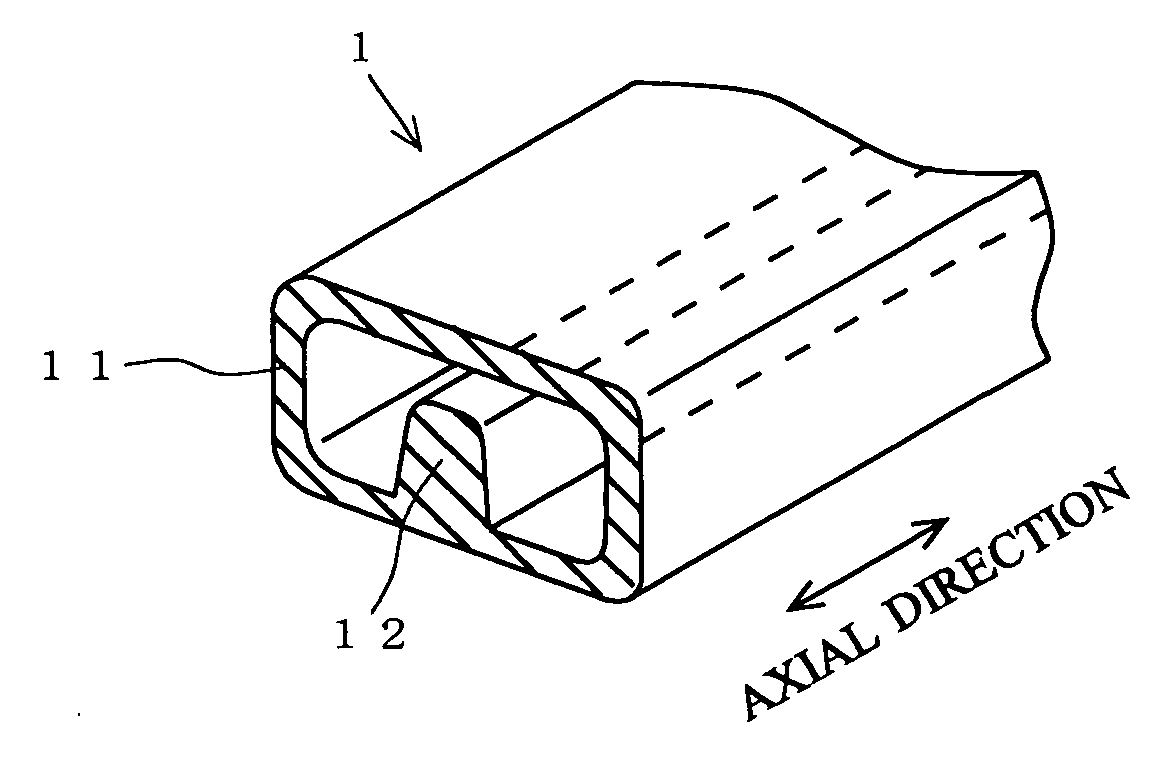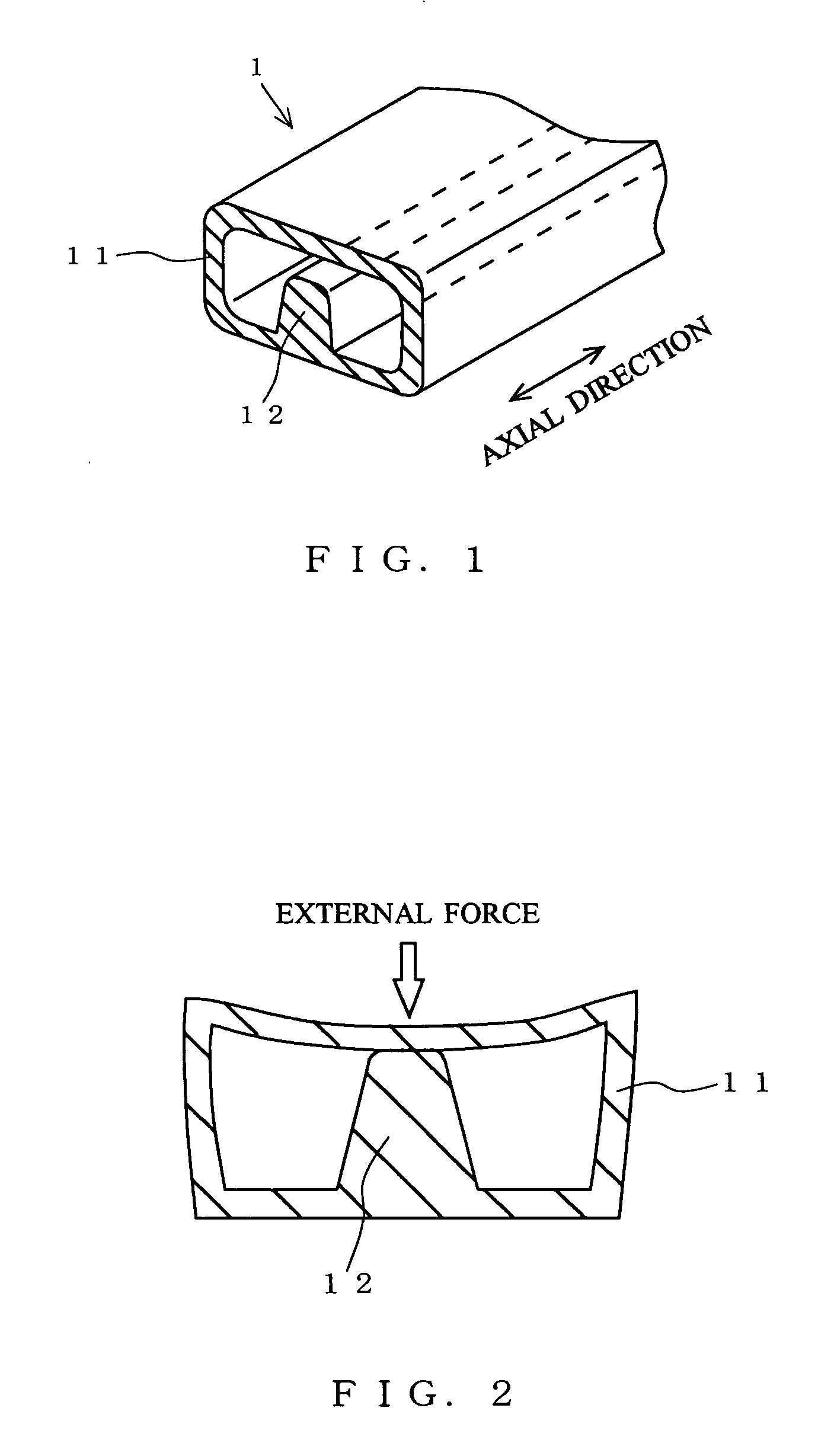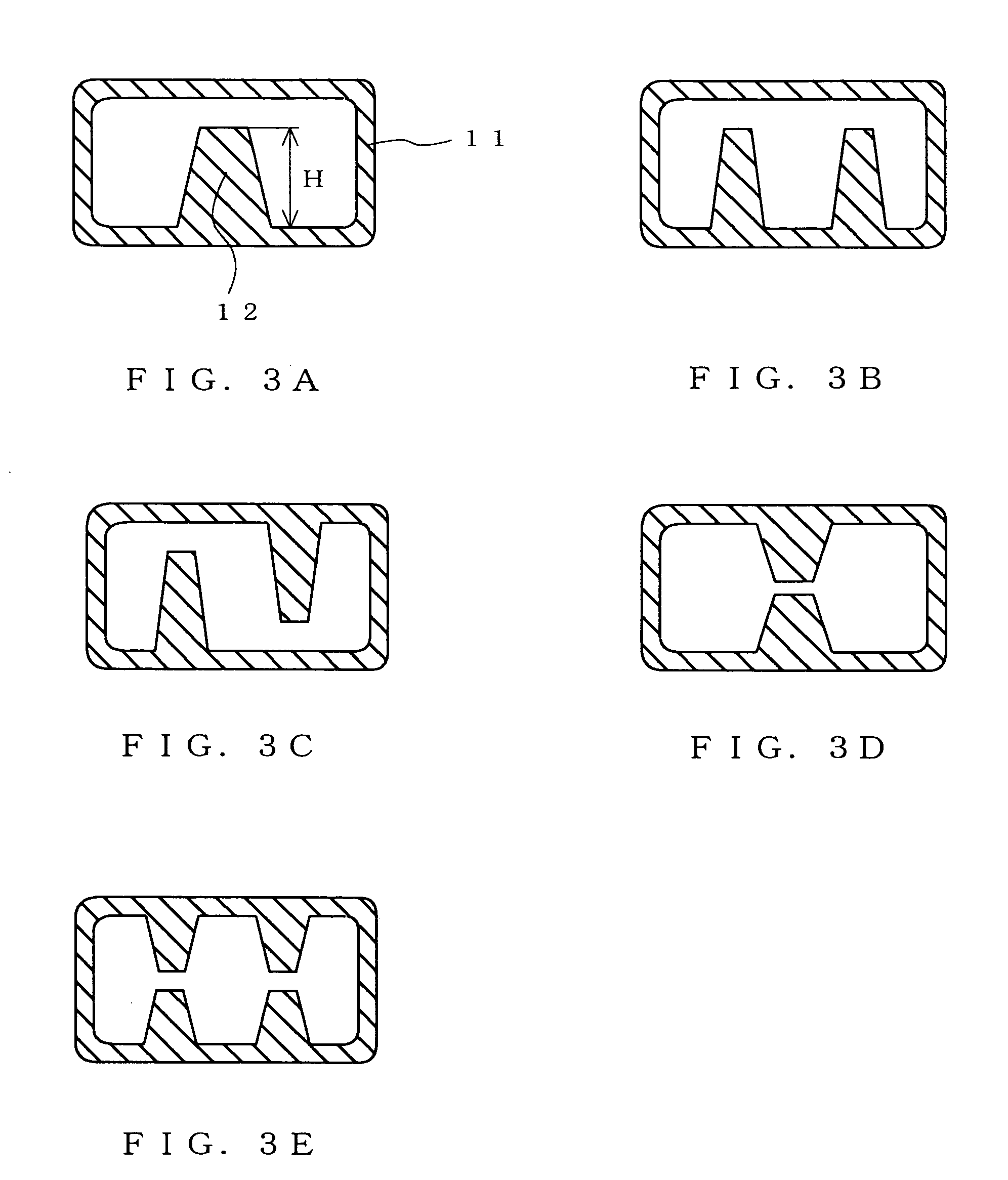Hose
a technology of hoses and hoses, applied in the field of hoses, can solve the problems of hoses falling off, water or gas leaking at a place where its pressure cannot be withstood, and prone to deformation under external force,
- Summary
- Abstract
- Description
- Claims
- Application Information
AI Technical Summary
Benefits of technology
Problems solved by technology
Method used
Image
Examples
example 1
Practical Example 1
[0034] A hose having a cross-sectional shape as shown in FIG. 3A was produced on an extruder by using, as a material, a polyolefin-based elastomer. The longer-side and shorter-side inner dimensions of the hose were 15 mm and 8 mm, respectively; the wall thickness of the hose body was 1.5 mm; and the height of the linear projection was 6 mm. One end of this hose was connected to a faucet of tap water with a fastener, and the other end of the hose was left open. Then, the faucet was opened to let water pass through the hose, and, while the water is vigorously running out of the hose at the open end thereof, the hose, which was placed on a floor, was trodden under the feet of a person having a weight of 65 kg. Through visual checking, no variation was observed in the flow rate of the water running out of the hose at the open end thereof. Even when the hose was bent at an acute angle, no variation was observed in the flow rate of the water running out of the hose at t...
PUM
 Login to View More
Login to View More Abstract
Description
Claims
Application Information
 Login to View More
Login to View More - R&D
- Intellectual Property
- Life Sciences
- Materials
- Tech Scout
- Unparalleled Data Quality
- Higher Quality Content
- 60% Fewer Hallucinations
Browse by: Latest US Patents, China's latest patents, Technical Efficacy Thesaurus, Application Domain, Technology Topic, Popular Technical Reports.
© 2025 PatSnap. All rights reserved.Legal|Privacy policy|Modern Slavery Act Transparency Statement|Sitemap|About US| Contact US: help@patsnap.com



